#Phidias
Explore tagged Tumblr posts
Text

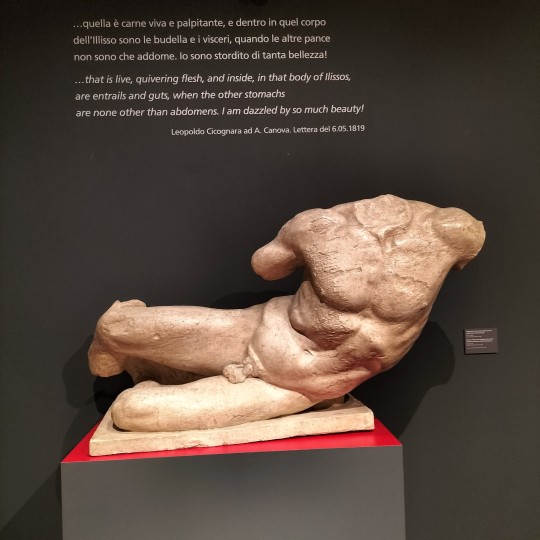


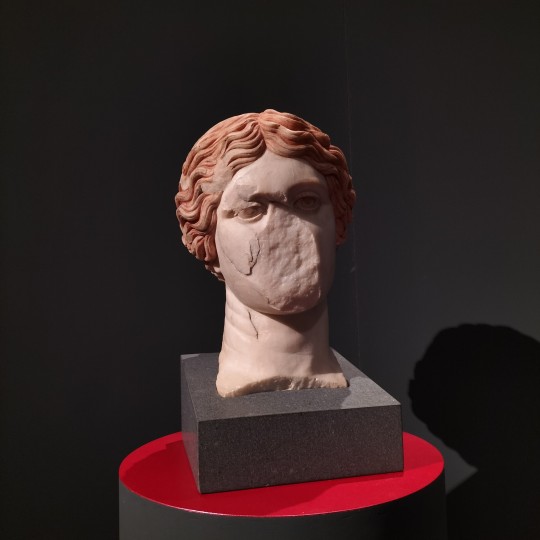
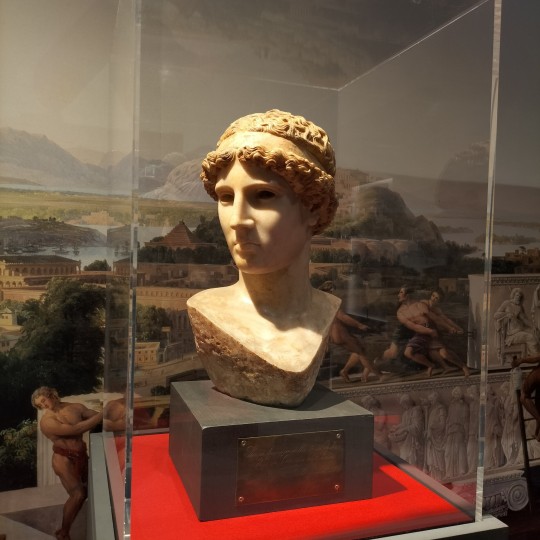
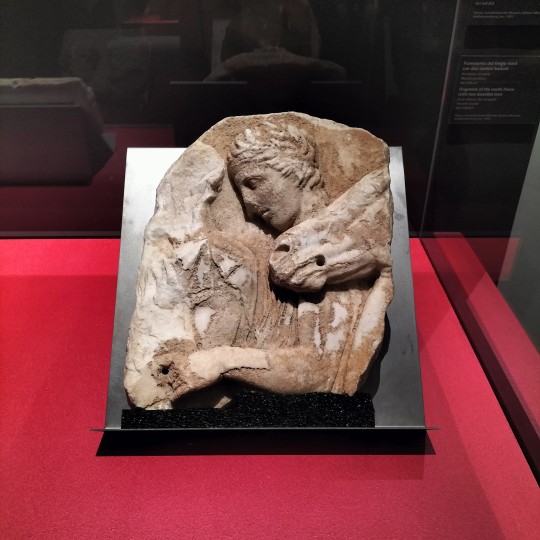

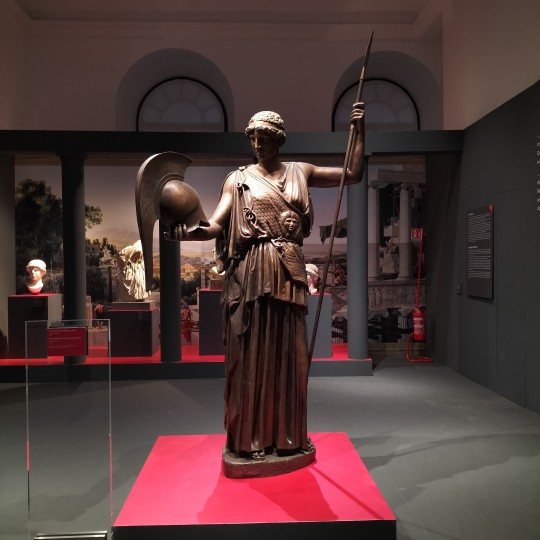

from november 2023 to may 2024 at villa caffarelli, part of the capitoline museums, an exhibit entirely dedicated to phidias, the famous sculptor behind the parthenon and the chrysoelephantine colossi of the athena parthenos and zeus of olympia.
the exhibit is composed of a selection of more than 100 works, from archaeological finds to paintings and manuscripts narrating the life and work of the artisan, with the support of reconstructions, multimedia installations and digital content.
the exhibition is the first of a series of five exhibitions, "i grandi maestri della grecia antica". in addition with the artworks coming from museums in rome and other italian institutions, the exhibit contains some extraordinary loans, items that have never left their museum premises, as for example two fragments from the parthenon frieze, from the acropolis museum in athens.
tiktok
#paiawon.txt#tagamemnon#phidias#archaeoblr#archaeology#art history#rome#capitoline museums#musei capitolini#athens#athena parthenos#zeus of olympia#parthenon#greek archaeology#archaeology tag
785 notes
·
View notes
Photo

The extraordinary quality and quantity of the marble sculpture which adorned the 5th century BCE Parthenon in Athens made it the most richly decorated of all Greek temples. The sculpture, now mostly separated into the Parthenon Marbles (Elgin Marbles) and the Acropolis Museum Collection of Athens, once consisted of 92 metopes, a unique frieze running around all four sides of the building, and both pediments filled with 50 monumental figures. The sculpture presented scenes from mythology which were a metaphor for the Greek triumph over Darius and Xerxes in the recent Persian Wars. The whole edifice and fine artwork were designed to wow onlookers and glorify Athens and her patron goddess Athena. As the instigator of the whole project, Pericles rightly boasted "...we shall be the marvel of the present day and of ages yet to come".
50 notes
·
View notes
Photo

Source details and larger version.
Vintage Greek imagery.
43 notes
·
View notes
Text
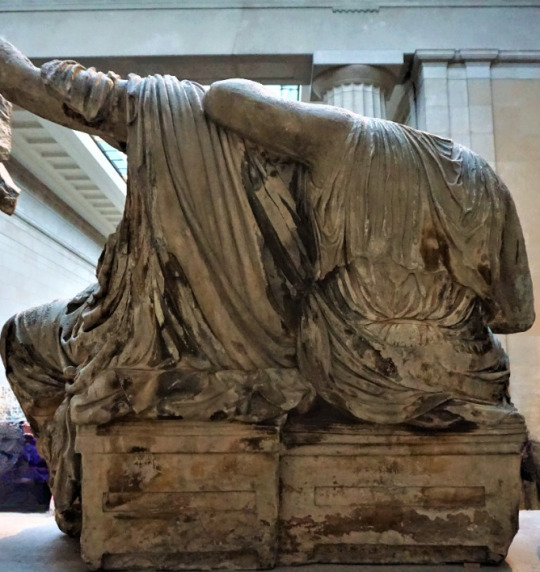
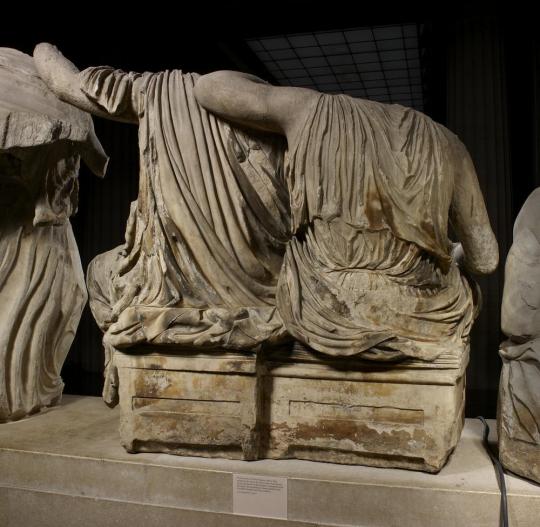
Rear views of Lady Demeter and Queen Persephone from the east pediment of the Parthenon. Both goddesses sit on boxes which may be linked to the Eleusinian mysteries 🏛
#demeter#persephone#parthenon#east pediment#british museum#marble#elgin marbles#phidias#birth of athena#eleusinian mysteries#🏛🏺
261 notes
·
View notes
Text

Phidias Showing the Frieze of the Parthenon to his Friends, Lawrence Alma-Tadema, 1868
#birmingham museum trust#parthenon#lawrence alma tadema#19th century#art history#art#aesthethic#painting#ancient greece#greek art#british art#phidias
24 notes
·
View notes
Text
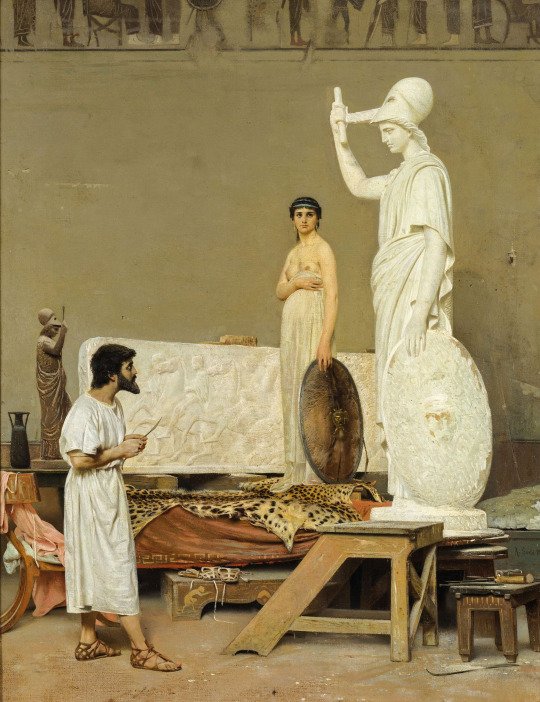
Raffaello Sorbi (Italian, 1844-1931) Phidias carving the Statue of Minerva for the Parthenon, 1869
#Raffaello Sorbi#italian art#1800s#phidias#minerva#southern europe#classical art#cradle of civilization#phidias carving the statue of minerva for the parthenon#art#fine art#european art#europe#beautiful woman#european#oil painting#fine arts#europa#mediterranean#beauty#classic art#painting#italian#italy
94 notes
·
View notes
Text

Today in archeology class, the professor showed us this statue of Apollo. This is a Roman replica, the original was in bronze made by Phidias. I admit I was enchanted looking at Him for at least 5 minutes without batting an eye, completely in love, I was really like ✨️👄✨️. I was seriously teary-eyed and on the verge of crying.
For those who are my mutuals and have been following me for a long time, you know that I love Apollo from the bottom of my heart and you will have understood that my religious crisis also includes Him. So finding this statue in front of me, in this specific critical moment of my life, moved me something inside. It's ironic how simple archeology lessons are helping me in such a dark and complicated time. I am so grateful every time, through these basic everyday moments, I realize that the Gods will never truly abandon me.
#MIC LOVE HER GODS#apollo worship#apollo deity#lord apollo#apollon#apollo#apollo devotee#apollo devotion#hellenic polytheistic#hellenic gods#hellenic pagan#hellenic polytheist#hellenic polytheism#witch blog#witchblr#witch#hellenic polythiest#Phidias
111 notes
·
View notes
Text
I would give everything for a historical TV drama about the Periclean circle.
Phidias risking his mind to create the perfect works. Perikles struggling to balance the financial demands of his people while risking revolts with the Delian treasury. Aspasia faithfully advising him, constantly protecting their reputations, and Perikles risking it all to protect hers. A romantic subplot between Sokrates and Alkibiades. The threat of Sparta always looming outside the gates, and the outrageous playwrights and growing populism within them.
Anyway I need it more than life itself.
105 notes
·
View notes
Text
Amazing mural being created in Athens Greece of one of the karyatides. The one that is missing from the Acropolis museum in Athens Greece. It’s being held hostage by the British museum. They will not return what Elgin stole from the Greek heritage since the Ottoman Empire occupation of Greece . Our hearts will forever cry until all the Elgin marbles have been returned from the British museum.
Please support the return of the Elgin marbles to their rightful owner.
.
The term Parthenon Marbles or Parthenon Sculptures (Greek: Γλυπτά του Παρθενώνα) refers to sculptures—the frieze, metopes and pediments—from the Parthenon held in various collections, principally the British Museum and the Acropolis Museum in Athens.[2]
From 1801 to 1812, Elgin's agents removed about half the surviving Parthenon sculptures, as well as sculptures from the Erechtheion, the Temple of Athena Nike and the Propylaia, sending them to Britain in efforts to establish a private museum. Elgin stated he removed the sculptures with permission of the Ottoman officials who exercised authority in Athens at the time.[3] The veracity of Elgin's claim has been disputed.[4]
Their presence in the British Museum is the subject of longstanding international controversy. In Britain, the acquisition of the collection was supported by some,[5] while others, such as Lord Byron, likened Elgin's actions to vandalism or looting.[6] A UK parliamentary inquiry in 1816 concluded that Elgin had acquired the marbles legally.[7] Elgin sold them to the British government in that year, after which they passed into the trusteeship of the British Museum. In 1983, the Greek government formally asked the UK government to return them to Greece, and subsequently listed the dispute with UNESCO. The UK government and British Museum declined UNESCO's offer of mediation. In 2021, UNESCO called upon the UK government to resolve the issue at the intergovernmental level.[8]
The Greek government and supporters of the marbles' return to Greece have argued that they were obtained illegally or unethically, that they are of exceptional cultural importance to Greece, and that their cultural value would be best appreciated in a unified public display with the other major Parthenon antiquities in the Acropolis Museum. The UK government and British Museum have argued that they were obtained legally, that their return would set a precedent which could undermine the collections of the major museums of world culture, and that the British Museum's collection allows them to be better viewed in the context of other major ancient cultures and thus complements the perspective provided by the Acropolis Museum. Discussions between UK and Greek officials are ongoing.[9][10]
Source: Wikipedia
.
# return the Elgin marbles
.
Video by Constantino Mass
#return the Parthenon marbles#elgin marbles#Phidias#Acropolis#museum#Greece#mural#καρυάτιδες#τα μάρμαρα είναι δικά μας#soulinkpoetry#Ελλάδα
19 notes
·
View notes
Text
Reproduction of the lost statue of Athena by Phidias

5 notes
·
View notes
Text

The iconic Parthenon on Acropolis Hill in Athens, Greece, was dedicated to Athena Parthenos. For a thousand years the building housed a colossal gold and ivory statue of the goddess by the master sculptor Phidias, later removed to Constantinople and lost.
5 notes
·
View notes
Photo

Les Sculptures du Parthénon
La qualité et la quantité extraordinaires des sculptures en marbre qui ornaient le Parthénon d'Athènes, au Ve siècle avant notre ère, en faisaient le temple grec le plus richement décoré. Les sculptures, aujourd'hui essentiellement scindées entre les marbres du Parthénon (marbres d'Elgin) et la collection du musée de l'Acropole d'Athènes, comprenaient autrefois 92 métopes, une frise unique courant sur les quatre côtés de l'édifice, et les deux frontons remplis de 50 figures monumentales. Les sculptures présentaient des scènes de la mythologie qui étaient une métaphore du triomphe grec sur Darius et Xerxès lors des récentes guerres perses. L'ensemble de l'édifice et des œuvres d'art était conçu pour impressionner les spectateurs et glorifier Athènes et sa déesse patronne Athéna. En tant qu'instigateur de l'ensemble du projet, Périclès se vantait à juste titre de "...nous serons la merveille du jour présent et des âges à venir".
Lire la suite...
3 notes
·
View notes
Photo

An infographic about the Seven Wonders of the Ancient World - extraordinary architectural and artistic achievements celebrated for their grandeur and innovation. The wonders included the Great Pyramid of Giza, the only surviving wonder, which served as a monumental tomb for the Egyptian Pharaoh Khufu. Although the Hanging Gardens of Babylon's actual existence and location is debated, they were described...
31 notes
·
View notes
Text
What was and what is....
The Acropolis, Propylaea, Erectheum, Temple of Athena Nike, Temple of Apollo at Delphi and the Temple of Poseidon at Cape Sounion 🏛🏛

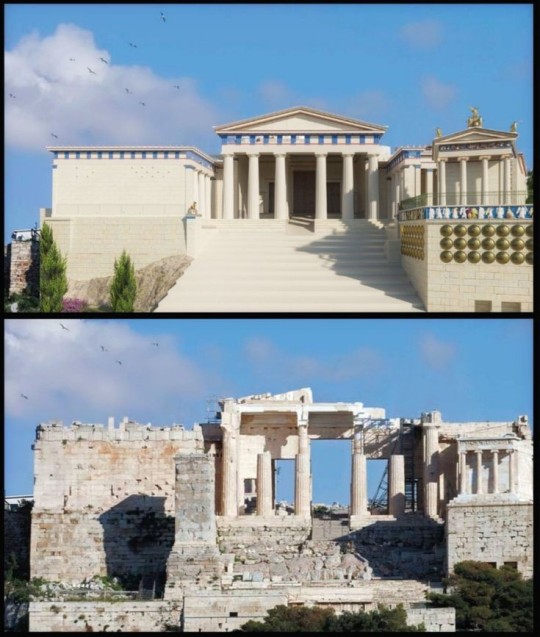
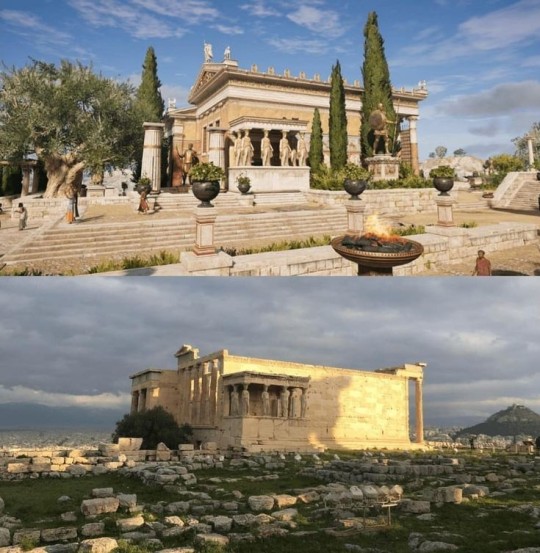



#greece#ancient greece#athens#acropolis#athena#Erectheum#athena nike#apollo#delphi#poseidon#cape sounion#temples#olympians#greek gods#phidias#iktinus#mneskiles#propylaea#callikrates#pericles#pythia#attica#parthenon#greek art
68 notes
·
View notes
Text
Phidias!!
ancient greek sculptor - in bonze & marble
known for zeus at olympia + athena in pantheon
ANDDD painter, engraver + metalworker
his lost artworks mentioned above survive in "descriptions of pausanias" (greek traveler + geographer)
these are the re-makings of the statues:
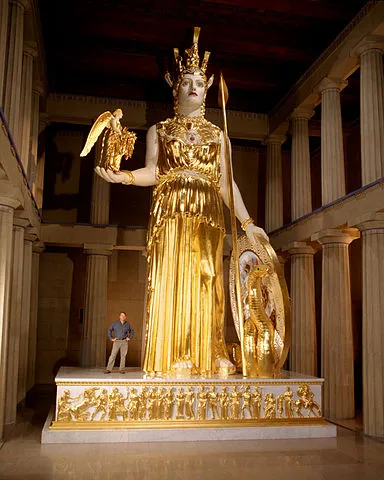
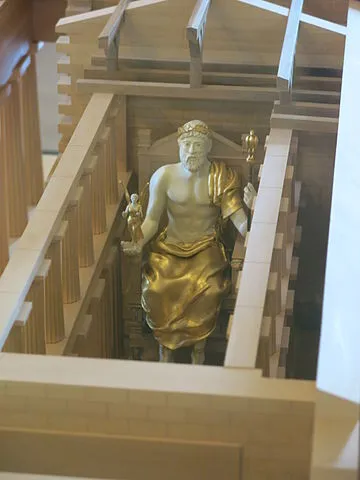
OKAY HELLO?? these are beautiful (especially considering they're re-makes), eSPECIALLY ATHENA. THE DETAIL. AAAAA
SHE'S 12 METERS TALL. i love that it also shows a human besides the statue, because it really exemplifies the POWER that she has, and the grace and the fact that shes A GODDESSSSS AA
anyway
phidias was commissioned for both statues by pericles, a greek politician + general (zeus was straight after athena)
alongside that, his workshop were also found by archaeologists, where they saw that a lot of the moulds found were also used to make his statue.
ALSO you can find writings by pausania here:
i started researching into this artist because apparently the pose on painting Napoléon on his Imperial Throne by jean-august-dominique ingres is inspired by phidias' sculpture of zeus:

i mean jesus christ this screams power. he (the painter) uses a lot of references used in art history to build up the image of a powerful figure (almost a deity)
anyway good fun
sources:
History and Archaeology Online. (2021). Phidias – Ancient Greece’s most Famous Sculptor. [online] Available at: https://historyandarchaeologyonline.com/phidias-ancient-greeces-most-famous-sculptor/.
Wikipedia Contributors (2019). Pericles. [online] Wikipedia. Available at: https://en.wikipedia.org/wiki/Pericles.
The Art Story. (2011). Jean-Auguste-Dominique Ingres. [online] Available at: https://www.theartstory.org/artist/ingres-jean-auguste-dominique/.
0 notes
Text


"Les Secrets du Parthénon : Un Temple aux Proportions Parfaites" documentaire de Gary Glassman (2006), juin 2024.
1 note
·
View note